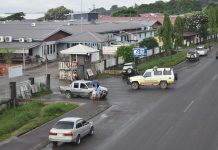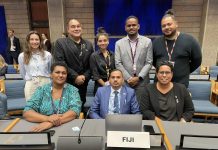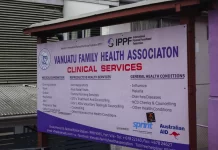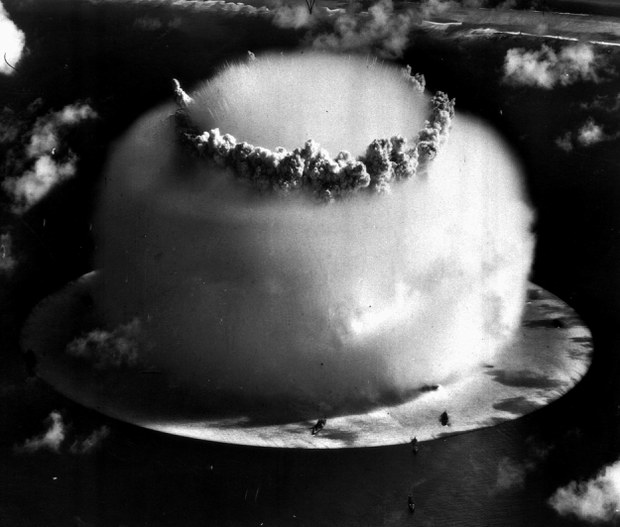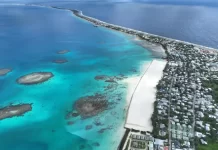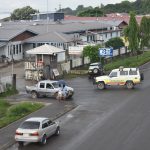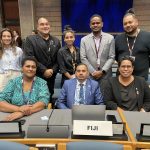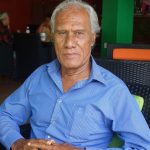The United States must consider a formal apology and full reparation to Marshall Islands citizens whose human rights have been violated by the legacy of nuclear testing in the Pacific, UN rights experts said in a new report.
Between 1946-58, the U.S conducted 67 known nuclear tests in the Marshall Islands that combined were more than 7,000 times more powerful than the atomic bomb dropped on the Japanese city of Hiroshima in 1945.
The Cold War-era detonations displaced communities, contaminated the environment and caused a host of long-lasting health and cultural impacts in the Pacific archipelago, according to the UN experts.
The tests have been widely documented to have caused illness from radiation exposure, including cases of thyroid tumors, cancers and leukemias. Activists have also reported hundreds of instances of miscarriages, stillbirths and so-called jellyfish babies – infants born without bones and with transparent skin revealing organs underneath.
The report mandated by the 47-country Human Rights Council in 2022 is the first to look at the legacy of nuclear testing from a human rights perspective, and will be delivered to the council on 04 October.
In an address to the UN General Assembly on Wednesday, Marshall Islands President Hilda Heine drew attention to the findings and said her people were still grappling with the consequences of testing generations later.
“Testing impacts left behind deep scars, with communities remaining in exile from their home islands, billions of dollars in unmet adjudicated claims, and a social and environmental burden upon our youngest and future generations,” she said in New York.
The 18-page report, published Tuesday, lays out an array of ongoing challenges to human rights stemming from U.S. nuclear testing in the Marshall Islands, a collection of 29 atolls and five isolated islands in the North Pacific Ocean, about halfway between Hawaii and the Philippines.
They include obstacles to health, a clean and sustainable environment, adequate housing and indigenous rights.
The UN experts said the U.S government should “fully acknowledge its role in, and consider a formal apology for the past, current, and foreseeable future human rights impacts of the nuclear legacy in a manner culturally appropriate for the Marshallese.”
They also urged the U.S to consider funding and other resources for “full reparation” of Marshallese whose rights have been affected.
Among the report’s other recommendations is for the Marshall Islands to deploy full government resources to support its nuclear justice strategy, including efforts to memorialize events through a school curriculum, archive and museum.
Nuclear testing in the Marshall Islands began in July 1946 while the chain of islands was part of a U.S-administered strategic territory sponsored by the UN.
In total the U.S conducted 23 detonations on Bikini Atoll and 44 on or near Enewetak Atoll, but fallout spread across the Marshall Islands and the world.
The most notorious of those tests occurred on March 1, 1954, when the U.S. detonated its largest thermonuclear device ever known as Castle Bravo – causing the single worst incident of radioactive fallout in American history.
The designers of the bomb miscalculated the explosive yield, which was recorded at 15 megatons – 1,000 times that of the weapon that destroyed Hiroshima.
The bomb produced a mushroom cloud estimated to be nearly 7.2 kilometers (4.5 miles) wide and 40,000 meters (130,000 feet) high, raining down pulverised coral, water and radioactive particles on the inhabited atolls of Rongelap, Ailinginae, Ailuk and Utrōk, according to official U.S records.
Residents of the islands were not evacuated for up to three days after the test and in the case of Ailuk atoll, not at all, declassified documents show. Bikini Atoll remains uninhabitable to this day due to high levels of radiation.
Children were reported to have played in the snow-like debris of the fallout and later exhibited signs of radiation exposure. The explosion also sickened U.S servicemen working on the operation and a crew onboard a Japanese fishing boat some 130 kilometers (81 miles) east of the test site.
Today, much of the radioactive debris collected after the testing is stored in a cracking and crumbling concrete waste repository on Enewetak Atoll called Runit Dome.
A 2020 report by the U.S Department of Energy said the dome was leaking radioactive material into the marine environment, but it downplayed the threat because the leakage was “dwarfed” by existing levels of contamination in the lagoon.
Heine said the testing was the only time in which any UN organ has ever explicitly authorised the detonation of nuclear weapons.
“We can’t undo the past. But as a United Nations, we owe it to ourselves to make amends through the adoption of a resolution which formally apologises for the failure to heed the petition of the Marshallese people,” she said.
The Marshall Islands has long sought a formal apology from the U.S and adequate compensation for the ongoing health, environmental and economic issues caused by nuclear testing.
In 1986, the Marshall Islands and Washington entered into the Compact of Free Association, which gives the U.S military access to its vast ocean territory in exchange for funding and the right for their citizens to live and work in the U.S.
The agreement also promised compensation for nuclear testing. The Marshall Islands, however, has argued the U.S has not lived up to its responsibilities under Section 177 of the agreement, which provides for the “full settlement of all claims past, present and future.”
The two countries established a Nuclear Claims Tribunal in 1987, which made limited payments for personal injury and property damage from a fund of US$150 million.
But the tribunal ran out of money in mid-2009, leaving more than US$23 million in personal injury awards and US$2.2 billion in property damage awards unpaid, according to the Marshall Islands’ National Nuclear Commission.
The U.S, which opposed the resolution on the Marshall Islands nuclear legacy, has reported paying more than US$1 billion, when adjusted for inflation, to affected communities including payments made before 1986.
The UN experts said the U.S should take “further measures necessary to provide full and effective remedies” for the impacts of nuclear tests.
Heike Alefsen, the Pacific regional representative for the Office of the UN High Commissioner for Human Rights, said the legacy of nuclear testing continues to have a broad impact on human rights in the Marshall Islands.
“It’s not just health, it’s not just what everybody always talks about, the cancer issues, the mental health issues,” said Alefsen, who was involved in capacity building work with the Marshall Islands in parallel to the report.
“It’s not just displacement. It’s also the cultural identity that comes along with people who are displaced … who realise, generations later when they’re facing and their descendants are facing generational trauma, that they can no longer go back.”
She said the international community could help by investing in healthcare facilities, new research and memorialisation.


